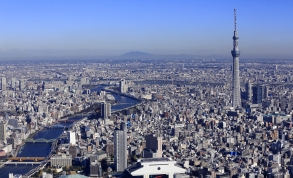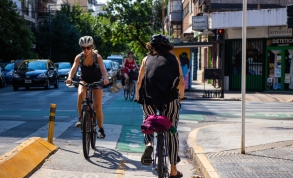Related Content

Air quality
Tokyo Vehicle Emission Reduction Program

Physical activity
Active travel cuts carbon and improves health in New Zealand

Physical activity
With a population of around 4 million, New Taipei is the most populated city of Taiwan. The city is characterised by high population density, high demand for urban mobility, and high levels of air pollution. The city has introduced several actions to reduce greenhouse gas emissions and air pollution from the transport sector.
New Taipei, with 4 million inhabitants, is the most populated city in Taiwan. The city is characterised by high population density, high demand for urban mobility, and high levels of traffic and congestion. To reduce greenhouse gas emissions and air pollution from the transport sector, the city government has established a Low-Carbon Community Development Centre in 2007. It is the first agency to implement climate actions under the Environmental Protection Department. In 2016, a cross-departmental ‘Climate Change Mitigation and Adaptation Promotion Panel’ was further established, enabling 17 different departments to collaborate and implement climate actions to reduce greenhouse gas emissions and air pollution across the city.
To reduce air pollution and greenhouse gas (GHG) emissions from the transport sector, New Taipei introduced various actions to promote the use of public transport and increase active travel:
In 2020, the airport MRT line alone transported over 18.5 million passengers. Based on traffic and survey data, the actions to develop a sustainable urban transport system in New Taipei resulted in an estimated annual reduction of 141,648 tonnes of carbon dioxide (CO2) equivalent in 2020, through:
Moreover, traffic air pollution monitoring stations in the city showed a reduction of PM2.5 levels from 22.7 µg/m3 of PM2.5 in 2014 to 14.2 µg/m3 in 2021.
New Taipei has set the ambitious goal of reducing its emissions by 30% by 2030 (compared to the 2005 baseline) and zero emissions by 2050. The city’s emissions in 2005 totalled 19.11 million metric tons. In 2020, the whole transport sector in New Taipei emitted 4,867,651 tonnes of CO2e, out of which around 94% result from on-road transportation. One of the reasons for such high emissions from on-road transportation is the high number of registered vehicles in 2020: 3,242,379 vehicles, which equates to 804 vehicles per 1,000 people.
The city therefore developed short-, mid-, and long-term plans to shift to more sustainable modes of transport and to reduce the GHG emissions of the transport sector. The short-term goal of the city is to reduce the use of private vehicles by connecting public transportation with walking and bicycle paths. The mid-term goal is to electrify vehicles, including its bus fleet. Lastly, the long-term goal of the city is to use renewable energy, modern technology, and new modes of transport. To achieve these goals, the city has been expanding six additional MRT lines, and will electrify all buses by 2030 and public sector vehicles by 2035. The city will also create green corridors for commuters to encourage walking and cycling.
These actions are a great start and important to create a more sustainable transport sector. However, more action is required to significantly reduce CO2 emissions and air pollution in New Taipei. The city is already experiencing the effects of climate change and facing growing challenges. Temperatures continue to rise, extreme weather events like typhoons are becoming stronger and more frequent, increasing the risk of floods and mudslides. Moreover, due to higher temperatures, the energy demand for air conditioning has increased, therefore clean energy solutions are also required.
The example of New Taipei therefore illustrates that mitigation actions in one sector are important but not sufficient and that cross-sectoral mitigation actions are required to achieve the 2050 net-zero emissions goal.